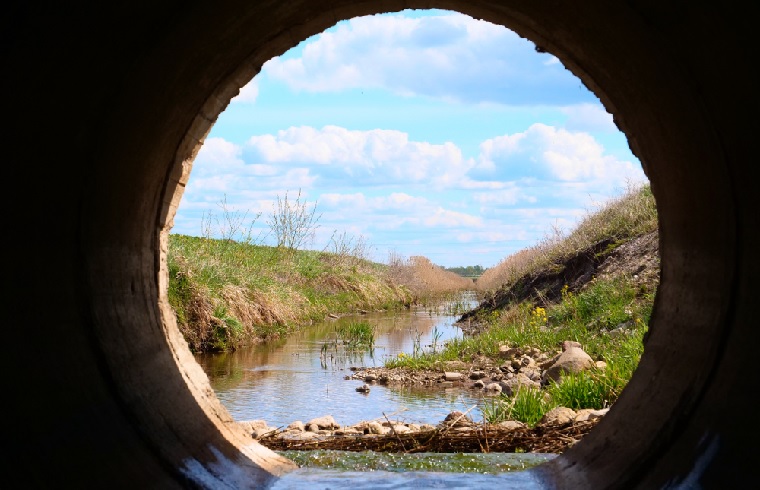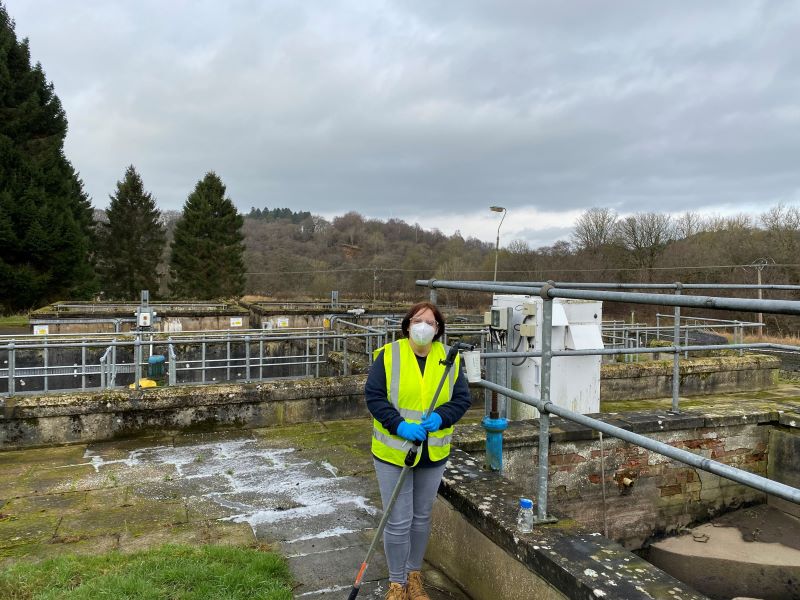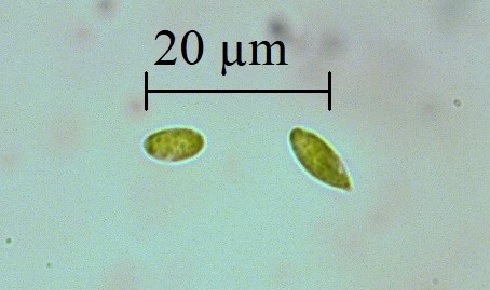Algae versus the superbugs

Deborah Reid explains how naturally occurring microalgae could be used to help remove the thousands of tonnes of antibiotics shed into wastewater and waterways around the globe
February 21st 2022
It is estimated that anywhere between 30% and 90% of a dose of antibiotics is metabolised by the body, leaving the rest to be excreted in human or animal waste. From hospital and domestic sanitation, these antibiotics enter the sewer system where they are conveyed by gravitational flow and a labyrinth of guiding pipework towards wastewater treatment plants. As the compounds pass through various treatment stages they interact with bacteria, either free-living or in biofilms, and together with the presence of heavy metals produce a co-selection pressure for the occurrence of antimicrobial resistance (AMR) genes.
In most cases the intensity and variety of AMR genes increases from the influent wastewater to the discharged, treated effluent. Bacteria with now enhanced AMR capabilities, alongside heavy metals and persistent antibiotics in their original or metabolite forms, are expelled into the receiving environmental waters[1]. The presence of antibiotics and heavy metals in this environment continues to encourage the same selection pressures for AMR genes in aquatic bacteria as they do in the wastewater treatment plants.
 Deborah Reid sampling at a wastewater treatment site.
Deborah Reid sampling at a wastewater treatment site. As warnings from the World Health Organization, the European Commission and the UK Government have made clear, urgent action is required to slow the spread of drug-resistant bacteria – the future of human health depends on it[2]. As well as the need to reduce antibiotic use, this steady flow of antibiotics into the environment must be halted. To give a sense of scale of this challenge, it is estimated that in China alone 162,000 tonnes of antibiotics were consumed in 2013, with an estimated 53,800 tonnes discharged into the environment after wastewater treatment[3].
Degrading the discharge
Owing to their continual discharge into the environment, antibiotics are now classed as pseudo-persistent contaminants in aquatic ecosystems, with even rapidly degrading antibiotics classified as pollutants[4]. Their presence in aquatic environments impacts water quality, reduces biodiversity, and through the food chain endangers higher forms of aquatic life[5]. The ever-increasing presence of antibiotics and heavy metals in the environment must be reduced if a ‘One Health’ solution to AMR is to be attained.
Research currently being undertaken at Glasgow Caledonian University (GCU), sponsored and supported by Medical Research Scotland and Scottish Water, is simultaneously mapping instances of AMR genes, pharmaceutical antibiotics and heavy metals found throughout several Scottish wastewater treatment plants. It also aims to test a new in situ photobioreactor that uses microalgae to reduce these harmful pollutants, which it is hoped can become part of a global solution to slow the emergence of AMR genes in the environment.
Microalgae are being explored as detoxifying agents due to their ability to use many types of organic and inorganic carbon, inorganic nitrogen, phosphorous and nitrates as energy sources[5]. Alongside the natural degradation of antibiotics and heavy metals through photodegradation and hydrolysis, microscopic algae can help remove antibiotics from the environment via three routes: accumulation, biodegradation and adsorption[6] – processes they have evolved to protect themselves against the harmful chemicals they encounter in the environment.
Adsorption is an extracellular process where the antibiotic or heavy metal is simply attracted to the surface of the alga due to it carrying an opposite charge, or by hydrophobic interactions, causing the antibiotic to passively bind to the cell[7]. Interestingly, this process has been shown to work equally well for heavy metal removal, regardless of whether the algal cells are alive or dead[8]. This mechanism can remove antibiotics and heavy metals from wastewater as a standalone process or as a precursor for other mechanisms, such as accumulation or biodegradation.
Accumulation, unlike adsorption, is an intracellular process that removes antibiotics from wastewater as antibiotics passively cross the algal cell membrane. Once the antibiotics are encapsulated by the algae, they accumulate. Biodegradation, as the name suggests, describes the ability of the alga to break down the antibiotic by enzymatic action, either intracellularly or extracellularly, with the resulting derivatives metabolised by the algal cell[9].
Nature's anti-antibiotics
Microalgae are ubiquitous throughout freshwater and marine environments, and have evolved extensive abilities to tolerate fluctuations in pH, temperature, and high levels of organic and inorganic pollutants. Algae's low-cost growth requisites – just carbon dioxide and sunlight – are attractive to many developed and developing nations that will not just be hit hard by AMR, but are also fighting high carbon emissions and adverse weather conditions fuelled by climate change.
The accumulated microalgae biomass can be used as fertiliser, animal feed and even cosmetics, adding a further financial incentive to implement phycoremediation as an additional treatment step. Some heavy metals, including gold, silver and platinum, bond strongly to the microalgae, especially at low pH, which could also be extracted for financial benefit.
Many different microalgae have been identified as possible mediators of antibiotic reduction in wastewater treatment plants. For example, Coelastrum sphaericum was used to remove 33 different antibiotics from wastewater and was more effective than the traditional ‘activated sludge’ process. However, some species – such as Chlorella vulgaris and Scenedesmus vacuolatus – are sensitive to common antibiotics.
 Chlamydomonas acidphila is particularly good for the bioremediation of antibiotics
Chlamydomonas acidphila is particularly good for the bioremediation of antibiotics The algal genus Chlamydomonas has proven successful in the bioremediation of some antibiotics in wastewater, with one specific species identified at GCU, Chlamydomonas acidophila, that produces consistently encouraging results. C. acidophila’s tolerance of low sunlight levels, fluctuating temperatures and pH, plus its acidophilic nature – which controls the growth of other competing algal and bacterial species in the growth media – have identified it as an alga of interest for use in the UK[10].
Our research will accumulate data over three years, culminating in the completion of a feasibility study for deployment of a 500-litre, in-site microalgae photobioreactor at a rural Scottish wastewater treatment plant. Hopefully, this research will be the start of a new One Health solution to reducing the spread of AMR genes in treatment plants and therefore in the surrounding aquatic environment.
This reduction would in turn decrease the number of superbugs circulating in the aquatic environment, which would reduce the likelihood of AMR infections in animals and humans. As we have seen with the COVID-19 pandemic, nobody is safe from microbial threats until everybody is safe, and it is in our interests to develop cost-effective solutions to AMR that can be adopted in developing countries, as in doing so we protect ourselves and everyone.
Deborah Reid AMRSB is a Medical Research Scotland and Scottish Water-funded PhD student at Glasgow Caledonian University and is interested in both microbiology and chemistry.
1) Wöhler, L. et al. The grey water footprint of human and veterinary pharmaceuticals. Water Res. X 7, 100044 (2020).
2) O’Neill, J. Implementation of the global action plan on antimicrobial resistance. WHO (2016).
3) Zhang, Q. et al. Comprehensive evaluation of antibiotics emission and fate in the river basins of China: Source analysis, multimedia modelling, and linkage to bacterial resistance. Environ. Sci. Technol. 49(11), 6772–6782 (2015).
4) Evans, A. E. V. et al. Agricultural water pollution: Key knowledge gaps and research needs. Curr. Opin. Environ. Sustain. 36, 20–27 (2019).
5) Leong, Y. K. et al. Pollution prevention and waste phycoremediation by algal-based wastewater treatment technologies: The applications of high-rate algal ponds (HRAPs) and algal turf scrubber (ATS). J. Environ. Manage. 296, 113193 (2021).
6) Leng, L. et al. Use of microalgae based technology for the removal of antibiotics from wastewater: A review. Chemosphere. 238, 24680 (2020).
7) Xiong, J. et al. Can microalgae remove pharmaceutical contaminants from water? Trends in Biotechnol. 36(1), 30–44 (2018).
8) Suresh Kumar, K. et al. Microalgae – a promising tool for heavy metal remediation. Ecotoxicol. Environ. Saf. 113, 329–352 (2015).
9) Naghdi, M. et al. Removal of pharmaceutical compounds in water and wastewater using fungal oxidoreductase enzymes. Environ. Pollution. 234, 190–213 (2018).
10) Escudero, A. et al. Pharmaceuticals removal and nutrient recovery from wastewaters by Chlamydomonas acidophila. Biochem. Eng. J. 156, 107517 (2020).


